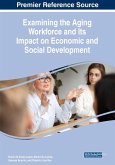The world is getting older and no one knows exactly what life will be like in tomorrow's older societies. But we do know that age dependency ratios - the ratio of retirees to workers - will be much higher than we see today. The implications of this trend are plain. The combined effects of fewer workers, more retirees and longer retirement periods threaten not only the sustainability of pension systems but also the broader economic prospects of many developed countries. This book describes current trends in birth rates, longevity and labor force participation and productivity, the cross-border flow of capital, the globalization of labor markets, the financial viability of social insurance programs, and the ways economic output is shared between working-age and retiree populations. Our most effective solution will likely be a multifaceted one: more workers, longer careers, higher productivity, and more global exchange and cooperation.
Table of contents:
1. Introduction; 2. Population developments in a global context; 3. Pension options, motivations and choices; 4. Pension structures and the implications of aging; 5. Retirement systems and the economic costs of aging; 6. Beyond pensions to health care considerations; 7. Labor supply and living standards; 8. Too many wants or too few workers?; 9. Alternatives to finding more workers; 10. Aligning retirement policy with labor needs; 11. Funding pensions and securing retiree claims; 12. Macroeconomic policies for improved living standards; 13. Risks associated with alternative public policies; 14. Roadmap to the future.
It describes current trends in birth rates, longevity and labor force participation and productivity, the cross-border flow of capital, the globalization of labor markets, the financial viability of social insurance programs, and the ways economic output is shared between working-age and retiree populations.
This book documents challenging consequences aging societies face: fewer workers, stretched pensions, questionable economic sustainability.
Hinweis: Dieser Artikel kann nur an eine deutsche Lieferadresse ausgeliefert werden.
Table of contents:
1. Introduction; 2. Population developments in a global context; 3. Pension options, motivations and choices; 4. Pension structures and the implications of aging; 5. Retirement systems and the economic costs of aging; 6. Beyond pensions to health care considerations; 7. Labor supply and living standards; 8. Too many wants or too few workers?; 9. Alternatives to finding more workers; 10. Aligning retirement policy with labor needs; 11. Funding pensions and securing retiree claims; 12. Macroeconomic policies for improved living standards; 13. Risks associated with alternative public policies; 14. Roadmap to the future.
It describes current trends in birth rates, longevity and labor force participation and productivity, the cross-border flow of capital, the globalization of labor markets, the financial viability of social insurance programs, and the ways economic output is shared between working-age and retiree populations.
This book documents challenging consequences aging societies face: fewer workers, stretched pensions, questionable economic sustainability.
Hinweis: Dieser Artikel kann nur an eine deutsche Lieferadresse ausgeliefert werden.








